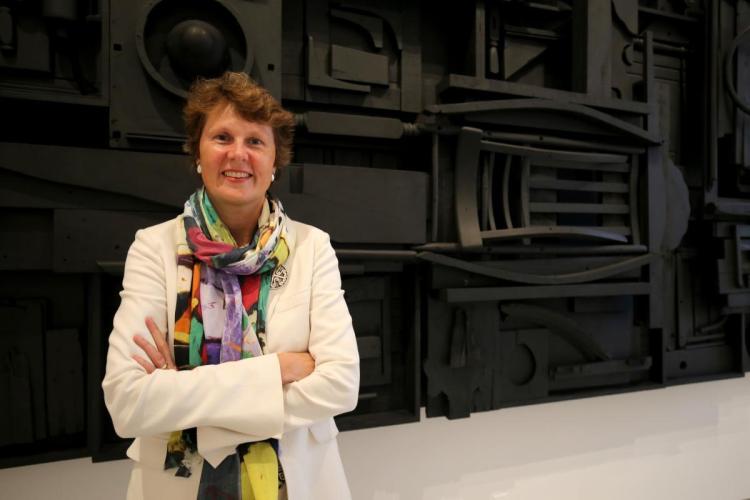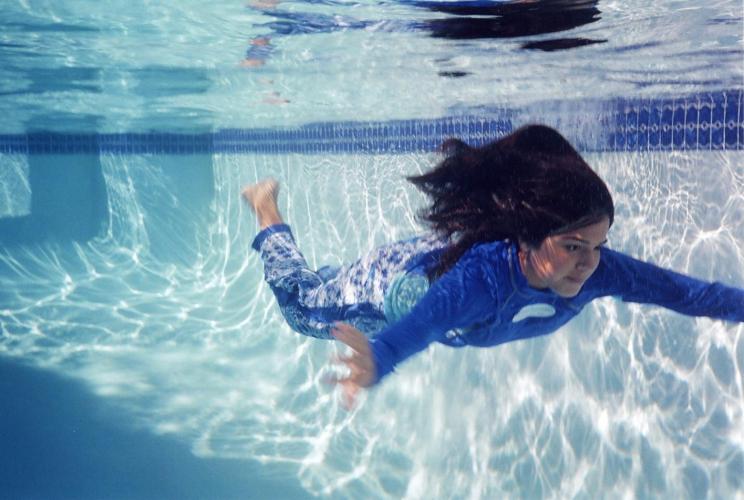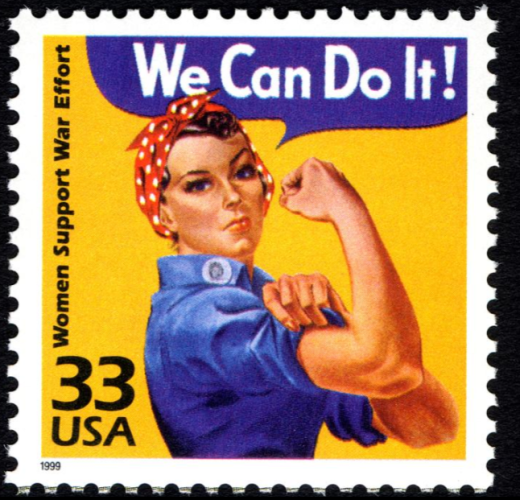
Smithsonian American Art Museum Director, Stephanie Stebich, in front of Louise Nevelson's "Sky Cathedral." Photo taken in 2019 by Libby Weiler.
By Stephanie Stebich, the Margaret and Terry Stent Director of the Smithsonian American Art Museum and Renwick Gallery and co-chair of the Smithsonian American Women's History Initiative, Because of Her Story
Even with such a challenging year, far more difficult and tragic than anyone could have predicted, there is much to highlight in American women's history. How about a best of Smithsonian digital resources? As you know, this March, Women's History Month went online as our country shut down—including our Smithsonian museums—in the hopes of keeping everyone safe from COVID-19 infection.
Since the creation of the Smithsonian American Women's History Initiative, Because of Her Story, in 2018, we have shared women's accomplishments through in-person exhibitions and online. With our museums closed, we continue to share the history and art that demonstrate how prior generations survived dark historic moments and persistent systemic challenges.
As I reflect on 2020, I wanted to share some of my favorite examples of digital women's history content from our museums and research centers. I hope these examples bring you respite and even joy.
Let's look toward 2021, when we will continue to learn from women activists, artists, athletes, and astronomers. I invite you to help us tell their stories. You can transcribe historic documents, edit Wikipedia, or donate to our Initiative to ensure we are able to continue this work. Come join us!
Videos to Watch
Eight Women's Voting History Stories You May Not Know
August 26, 2020, marked 100 years since the 19th Amendment became law. Winning voting rights was a job so big that no woman could do it alone. We produced a series of eight videos about diverse communities and their contributions to the fight for women's suffrage. Many of our viewers mentioned they hadn't learned these stories before. You can learn all eight stories in less than 20 minutes.
Kitty Cone: Advocate for Disability Rights
In 1977, 13 years before the Americans with Disabilities Act, Kitty Cone and other disability rights activists occupied a federal building in San Francisco. They demanded the government protect their rights. Ren, a student, speaks with Katherine Ott, curator at our National Museum of American History, about why Cone's work matters.
For Women's History Month, we shared four stories of women with an outsized cultural impact: salsa singer Celia Cruz, soccer player Mia Hamm, prison reform advocate Angela Davis, and disability activist Kitty Cone. In these short videos, Smithsonian curators speak with teens about how these women have shaped our world today. I invite you to watch Katherine Ott, curator at the National Museum of American History, speak with Ren, a student whose life has been transformed by the impact of Cone's activism.
Podcasts to Explore
America's Unknown Celebrity Chef
On October 20, 1939, chef Lena Richard became the first Black woman to host her own television cooking show. Richard's story shows that Black women were culinary authorities, even at a time when most African American women were relegated to the back of the kitchen.
In June 2020, the Smithsonian's Sidedoor podcast aired "America's Unknown Celebrity Chef," about Richard. In collaboration with our podcast team, our open knowledge coordinator Kelly Doyle worked to build Richard a Wikipedia page. In October 2020, volunteers at our Women in Finance Wikipedia Edit-a-thon worked to ensure more women entrepreneurs would be included on Wikipedia.
"America's Unknown Celebrity Chef" is only one of many Sidedoor episodes this season that explore women's history. If you're looking for more, I suggest listening to "Dress Coded," "Votes for Hawaiians," and "The Milkmaid Spy."
Art and Fashion to Appreciate
3D Outfits from Girlhood (It's Complicated)
Girlhood (It's Complicated) is an exhibition from our National Museum of American History that explores how girls have changed U.S. history for more than 200 years. Funded by the American Women's History Initiative, now you can explore outfits from the exhibition in 3D. I've enjoyed zooming in close on this gym outfit from around the 1860s, a leotard worn by gymnast Dominique Dawes at the 1996 Summer Olympic games, and these DIY remixed blue jeans from the 1960s–1970s. You can see the all the 3D outfits in Girlhood's online exhibition.
Hearts of Our People: Native Women Artists
As the Margaret and Terry Stent Director of the Smithsonian American Art Museum and Renwick Gallery, one highlight of my year has been seeing audiences recognize more Native women artists. We shared more than 80 artworks in the exhibition Hearts of Our People. You can find 20 of those artworks, plus videos and audio, on our website. Hear several of the artists discuss how these works reflect their families and their communities.

Four Muslim American Women Shaping Fashion Today
Did you know modest fashion is one of the fastest growing sectors of the global fashion industry? Our Cooper Hewitt, Smithsonian Design Museum presented Contemporary Muslim Fashions this year to share the work of designers, entrepreneurs, journalists, influencers, and others who have created this vital community. I invite you to learn about four Muslim American women who have influenced the fashion landscape.

Shereen Sabet (born Egypt, 1970) for Splashgear, LLC (est. United States, 2005), Ensemble (shirt, pants, and swimhood); Hawaiian Colorway Collection, 2006, Polyester knit; Courtesy of Splashgear, LLC
An App that Brings Space into Your Home
Reach Across the Stars: A Universe of Explorers
In a year where many of us are spending more time at home than ever before, technology can help us explore other places—and planets! Through a collaboration between the Smithsonian and NASA, we released the free app Reach Across the Stars: A Universe of Explorers. Through the app, you can learn the stories of more than 35 historic and current women in science. The app allows you to get answers to many top questions from space scientists working today. You can even take an augmented reality journey to the surface of Mars.
Ways to Join Us
As we're looking to the new year, I want to issue you a challenge. Will you become part of our ongoing efforts to increase representation of women? You can transcribe historic documents, virtually visit museum exhibitions, add women to Wikipedia, sign up for our newsletter, gift the 2020 Women's Suffrage Centennial Silver Dollar to a friend or family member, and donate to our Smithsonian American Women's History Initiative. I challenge you to take one action as a New Year's resolution. You can invite your friends to join, too, using #BecauseOfHerStory on social media.

Thank you so much for the time you have spent with us this year. It has been a joy to share these vital stories about history, art, and science with you and to hear which ones resonated deeply. I want to send you, and all our readers, the warmest wishes for this holiday season and the upcoming year.
Stephanie Stebich is the Margaret and Terry Stent Director, Smithsonian American Art Museum and Renwick Gallery and co-chair of the American Women's History Initiative, Because of Her Story. She champions the work of women artists as part of the mission of her museum which "celebrates the extraordinary creativity of artists whose works reflect the American experience and global connections."